
Alternates between a string of barrier islands, vast farmlands and alligator infested wetlands, North Carolina's coastal plain is far more diverse and wilder than one might assume. While a great share of its once swampy landscape has been converted to agricultural use, some enclaves of pristine wilderness managed to survive. Tucked away in an isolated corner of Gates County, Merchants Millpond provides an authentic glimpse to region's endemic nature, free of the hustle and bustle of modern civilization.
This remote speck of land in Gates County has been inhabited since the mid-17th century. During its early days, a mill pond named Hunters was created around Bennetts Creek’s head to provide power for the local community’s growing economy. The reservoir was eventually replaced by a local road, however, another downstream lake, Norfleets Millpond, was constructed in 1811, offering an alternative source of energy.
Several decades following its creation, the mill pond became a local economic epicenter, where a lumber-mill, a couple of corn-mills, farms and other businesses were booming, ultimately rebranding its name as Merchants Millpond. The tremendous success was short lived as the pond and its surrounding mills were abandoned around the late 1930’s, and so, the entire area was sold to developers. Fortunately, A.B Coleman, a nature enthusiast from Moyock, purchased the land few decades later, when he fell in love with its sheer serenity and wilderness. Coleman insisted that this place is too beautiful to be destroyed, and thus, he decided to donate the land to North Carolina, which designated it as a state park in 1973.
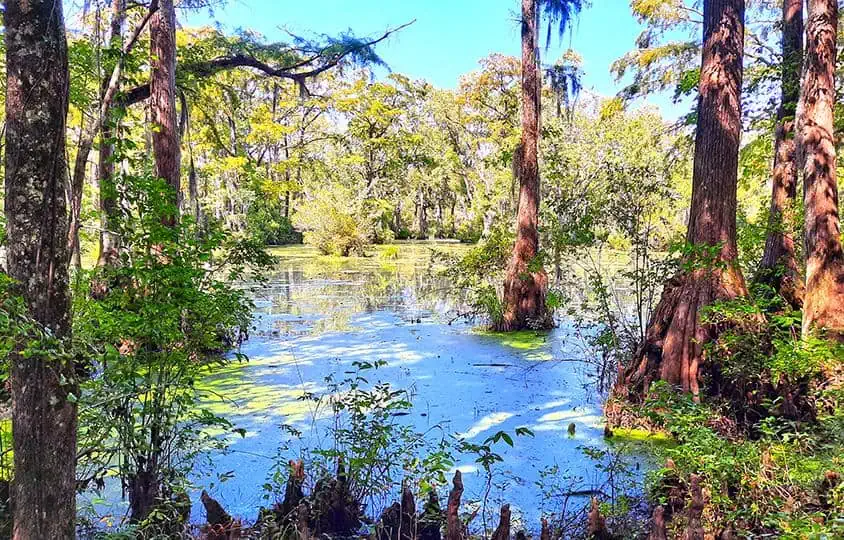
photography by: Omri Westmark
Located just off the Mill Pond Rd., Merchants Millpond visitor center is open daily from 8AM until afternoon, and offers info, maps, canoe renting and most importantly, some incredible insights and advices about the park. The main parking, however, is one kilometer southwards, at a location from where the park’s most scenic hiking trails start.

photography by: Omri Westmark
As the park’s name suggests, its main highlight is the 760-acre former millpond that these days, boasts an ultra-diverse ecosystem. The pond’s swampy dark waters can be traversed with a canoe or a kayak, in fact, two ramps provide access for any visitor who wish to explore the pond by a boat.

photography by: Omri Westmark
One ramp, around the parking area, is designated for private boats while a second ramp, adjacent to the visitor center, is where visitors can rent canoes and venture out to the murky reservoir.
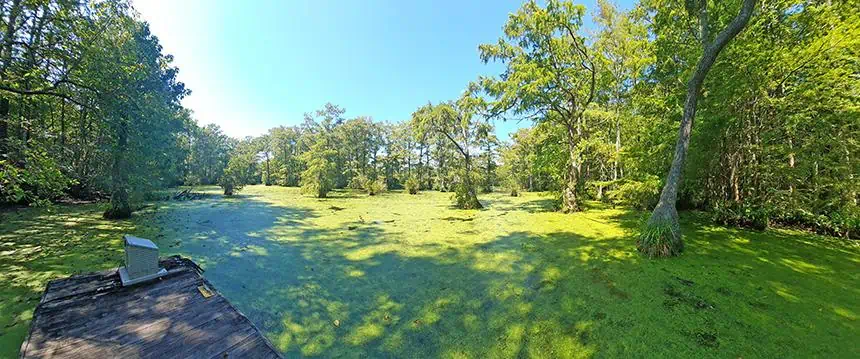
photography by: Omri Westmark
Whether you choose to explore the park by boat or by foot, the mesmerizing sights of the wetland, whose water is covered by a green carpet of aquatic plants and punctured by bald cypress trees, are unescapable.
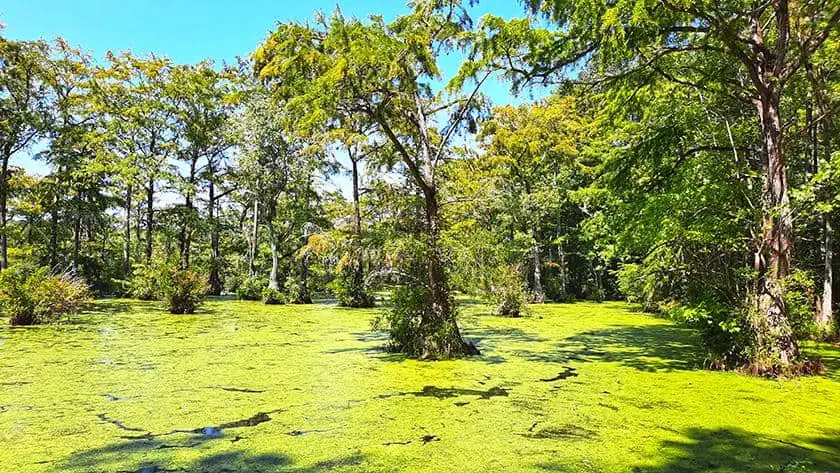
photography by: Omri Westmark
Out of the park’s nine trails, the Cypress Point trail is by far the shortest and the easiest, running 0.33 miles along the mill pond.
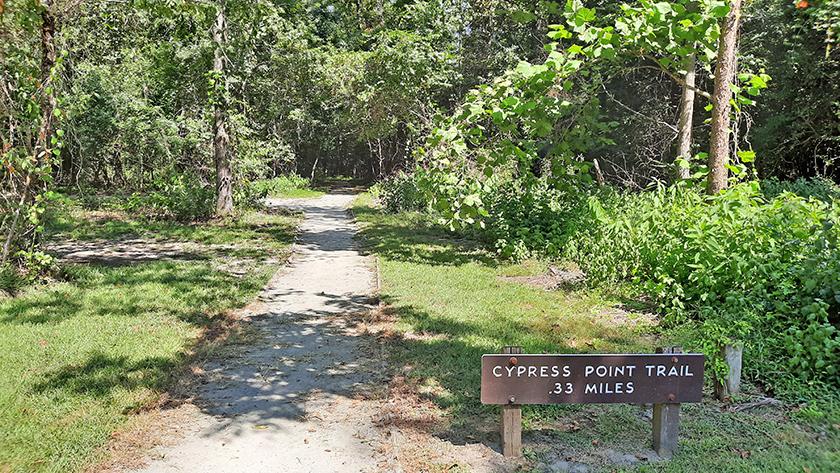
photography by: Omri Westmark
The trail is efficiently marked with red plastic signs that are nailed on the trees, albeit it’s extremely difficult to get lost as the pathways themselves are clear and wide. Take note that getting out of the designated trails is strictly forbidden, as there are several rare plant species that are extremely vulnerable to trampling.

photography by: Omri Westmark
As you continue along the trail, you’ll see the mill pond looming in between the trees. Over the decades, the 200-year-old reservoir turned into a habitat for a plethora of animal and plant species. Probably the most conspicuous of all are the duckweed, parrot’s feather, liverwort, water-fern and spadderdock, all of which coalesce into a large layer of tiny dots that covers roughly the entirety of the pond.
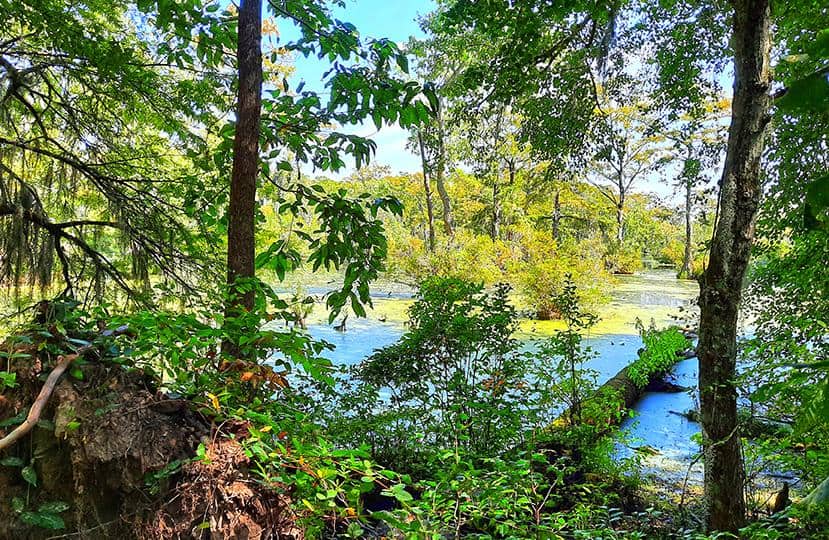
photography by: Omri Westmark
The trail itself alternates between a flat gravel pathway and a boardwalk, both of which offer a deep-forest glance, where endemic trees and shrubs compete for space and resources.

photography by: Omri Westmark
The trail’s wooden walkways were designed especially to be wheelchair-friendly, making the Cypress Point Trail accessible even for disabled people.
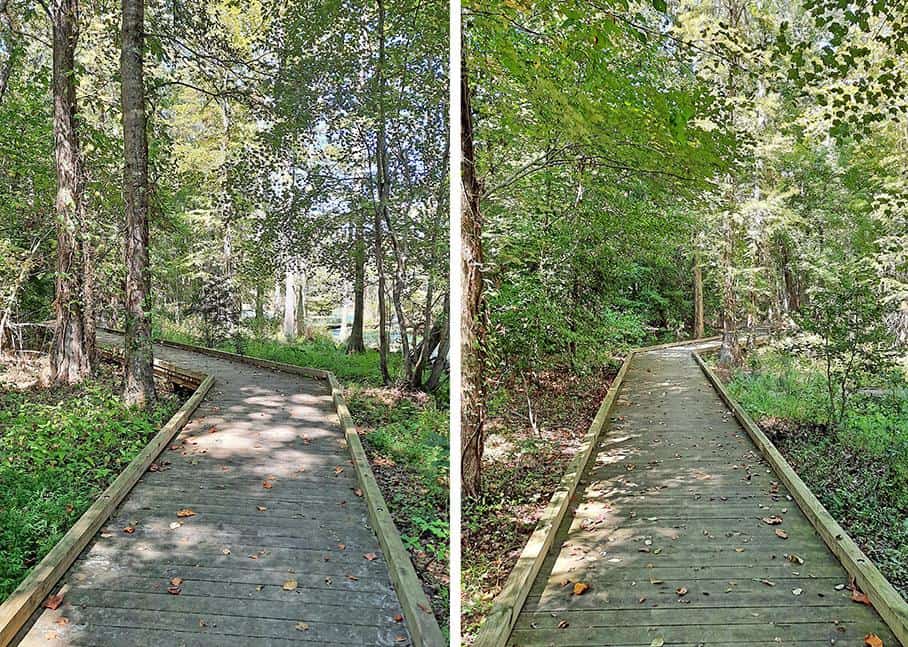
photography by: Omri Westmark
Greeting visitors along the route, the pinkish beautyberry, also known as Callicarpa, is a major source of food for local bird species. Whereas their high astringent content makes them unpalatable for humans, the ripe fruits are sometimes used to make jelly or liquors.

photography by: Omri Westmark
A series of wooden benches are scattered along the trail, including a seating corner that overlooks the swamp. The park’s sheer remoteness guarantees that those facilities will stay empty most of the time, and so, one can simply sit and enjoy the unusual views completely undisturbed, while catching the sounds of the many frogs and birds that inhabit the pond.
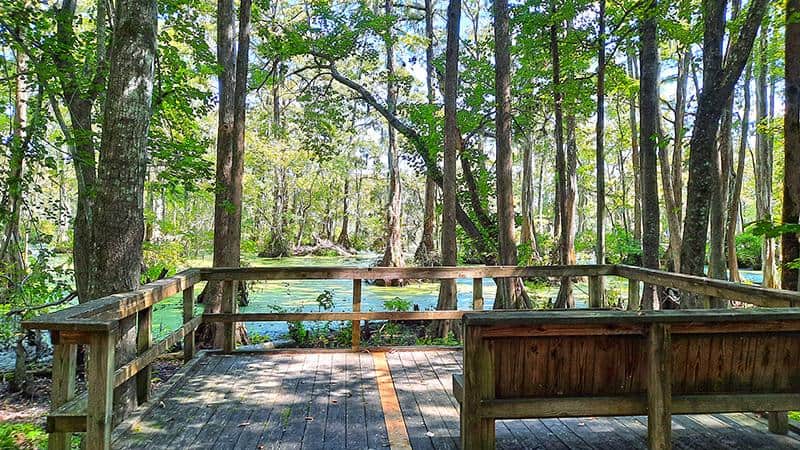
photography by: Omri Westmark
Dubbed as the enchanted forest, the mill pond’s Lassiter Swamp is probably the park’s most iconic segment. This submerged forest is dominated by hundreds of bald cypress and tupelo-gum trees that jut out of the swampy waters, some of which are 500 years old and became partly underwater when the reservoir was created.
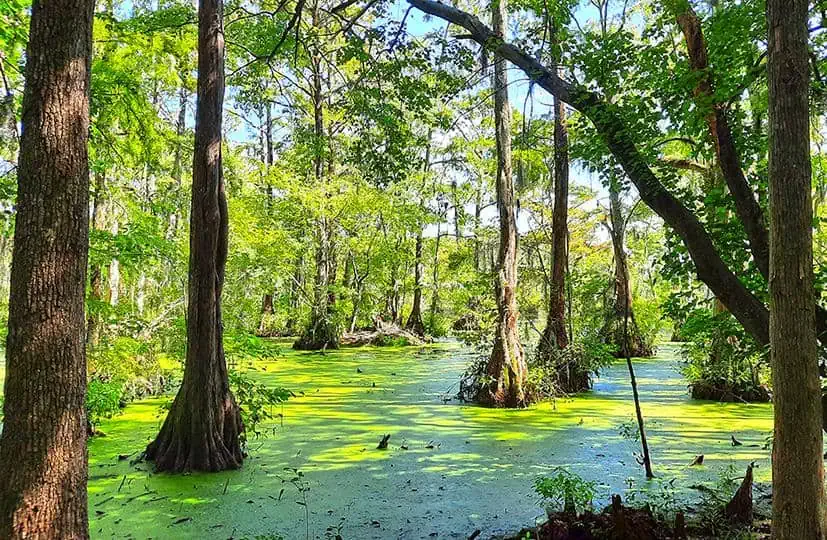
photography by: Omri Westmark
Besides the strikingly visible rich flora, the pond is also a home to a myriad of aquatic animals, including the formidable American alligator and dozens of frog species. If you get lucky enough, you can even spot river cooters (a type of aquatic turtle), resting and basking on the moldering trunks.
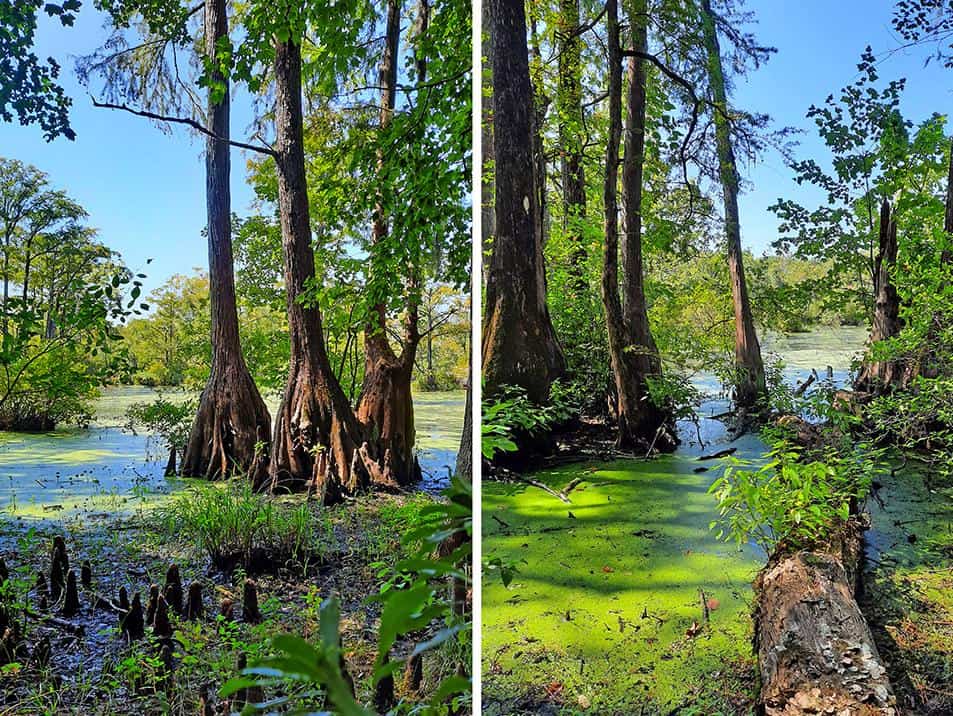
photography by: Omri Westmark
During half of the year, this coastal area is regularly baked by the unmerciful North-Carolinian sun, but luckily, the park’s thick cover of tree canopies provides a much-needed respite from the often-harsh conditions elsewhere.

photography by: Omri Westmark
Located less than 100 meters from where the Cypress Point trail starts, Coleman trailhead is accessible from the parking area. As you probably guessed by now, the trail is named after the aforementioned A.B Coleman, the former landowner of the park who donated this patch of wilderness to the state of North Carolina, that in turn declared it as a protected area.
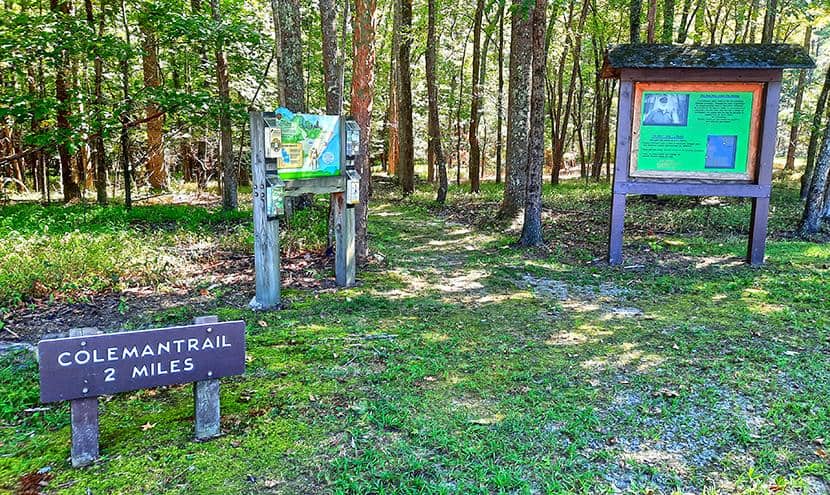
photography by: Omri Westmark
Unlike its shorter counterpart, Coleman Trail traverses through a hardwood forest, brimming with American beech and pine trees, with far less views of the mill pond itself.
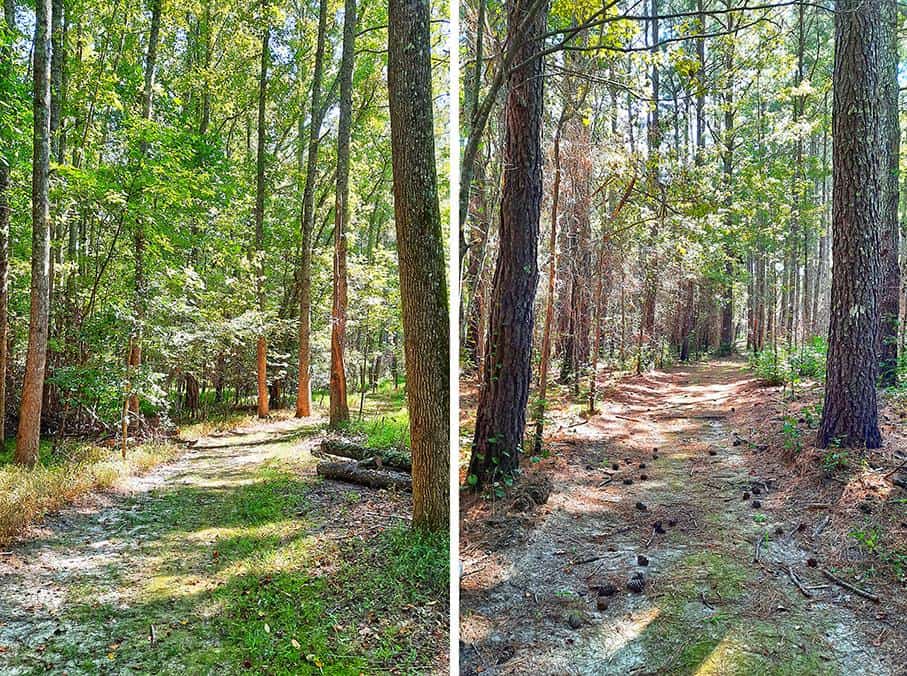
photography by: Omri Westmark
After a short a distance, you’ll come across a 1.5-mile loop, and so, it doesn’t really matter which direction you take.
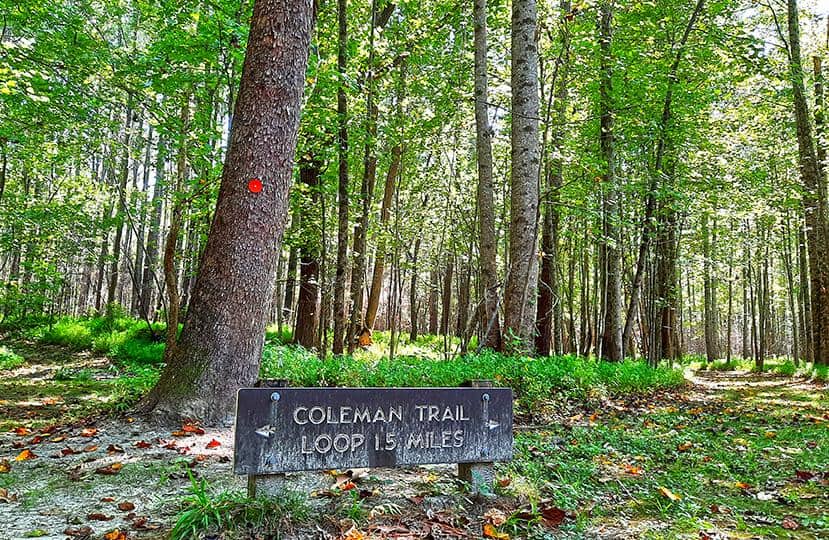
photography by: Omri Westmark
Be aware that the trail is teeming with flies and mosquitos, the latter of which pose an annoyance especially if you choose to stay still. The smartest thing to do in this case is to bring an insect repellent, otherwise expect your body to become a constant target for those small irritating creatures.
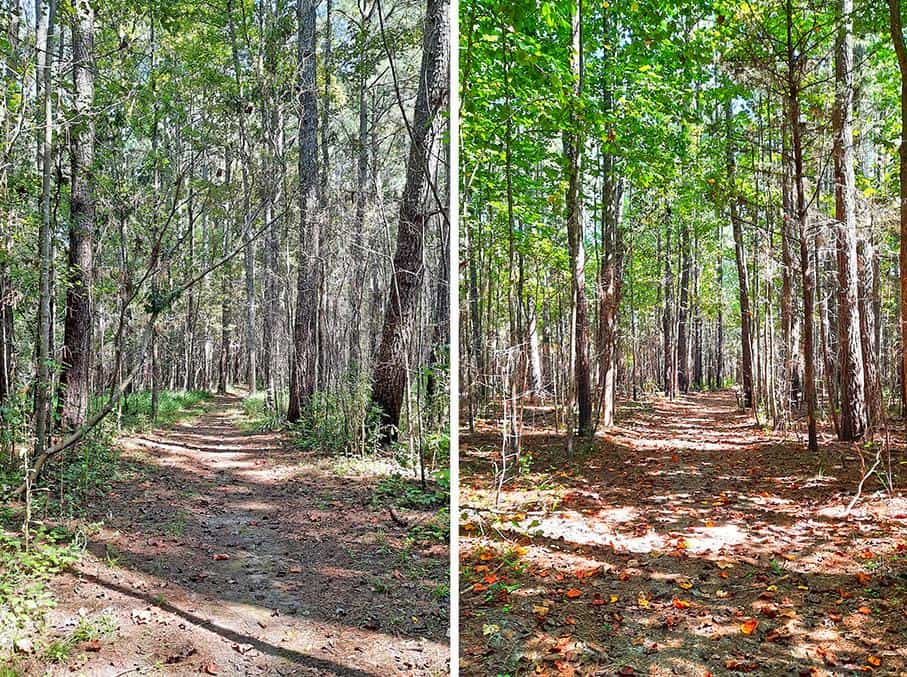
photography by: Omri Westmark
The forest’s tree canopies as well as the nearby pond are home to over 200 species of birds, including owls, egrets, and particularly turkeys, which gracefully scampering between the dense woodland.
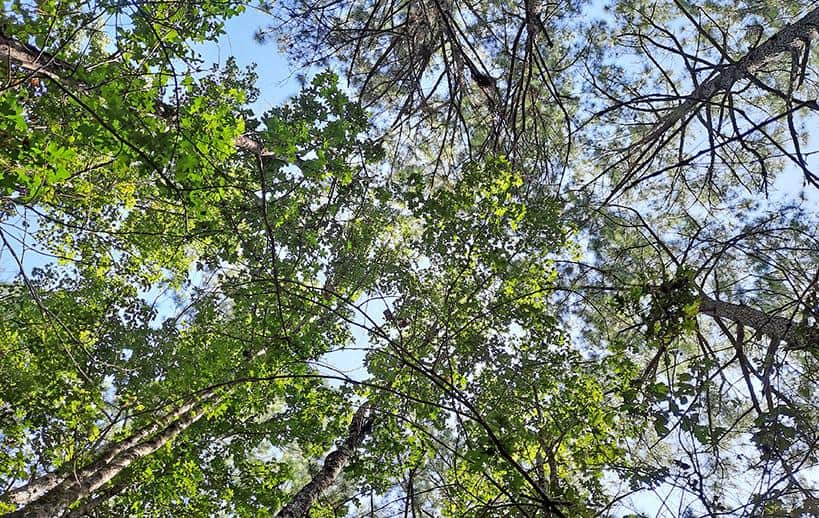
photography by: Omri Westmark
The autumn and spring are when thousands of migratory birds visit the park, most notably parulas, yellow-throated warbler and swamp warblers. Wintertime, on the other hand, provides a rare glimpse of the merganser, a small type of duck, whose male population is famous for a flamboyant black and white crest.
The mill pond’s forested banks along both the Cypress Point and Coleman trails are considered ideal for birdwatching, particularly if you opt to bring your own pair of binoculars.
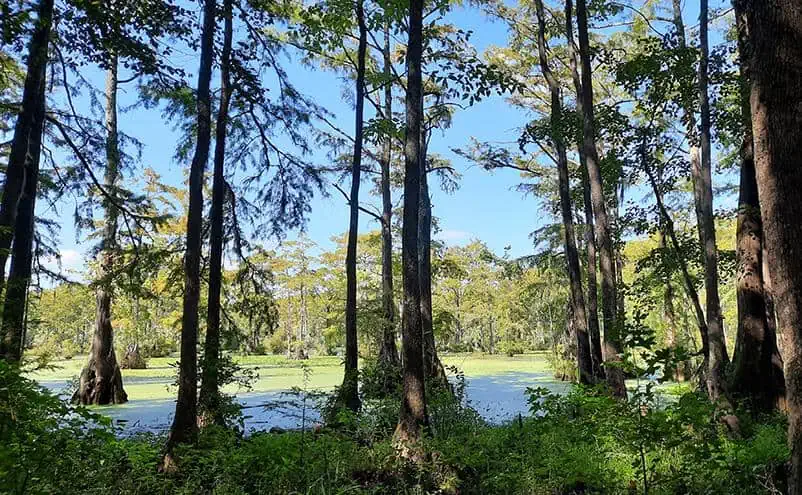
photography by: Omri Westmark
Since the dense forest of Merchants Millpond is bisected by tens of small streams that in some circumstances can become challenging to cross, the Coleman Trail features a set of small wooden bridges that grant a hassle-free passage for hikers.
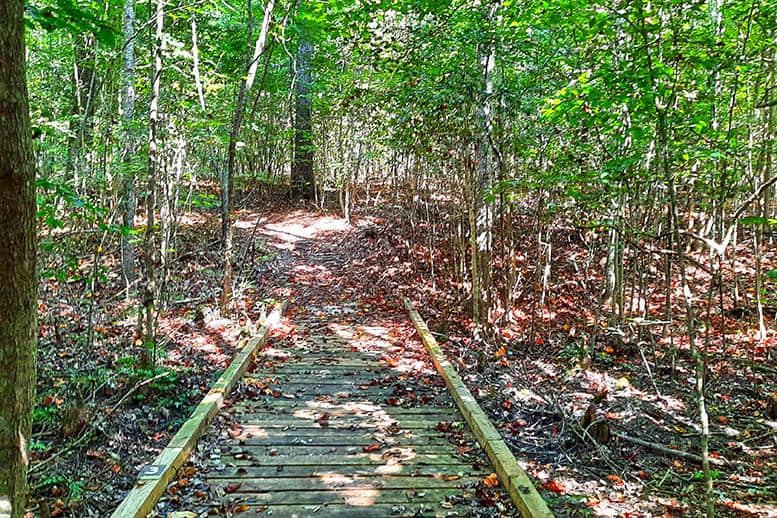
photography by: Omri Westmark
Curiously, the forest floor is littered with its own rich biome. Standing out among the dead leaves and dry pine needles, the poisonous Amanita mushrooms might look tempting for some, yet they are highly toxic and must be avoided.
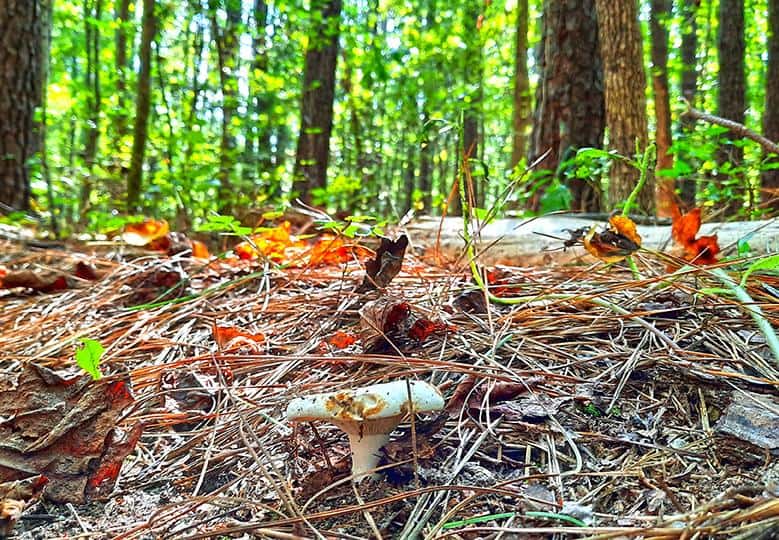
photography by: Omri Westmark
While both of the previously discussed trails had their trailhead adjacent to the parking area, a third one, the Bennetts Creek Trail starts from a further upstream location which entails a short walk.
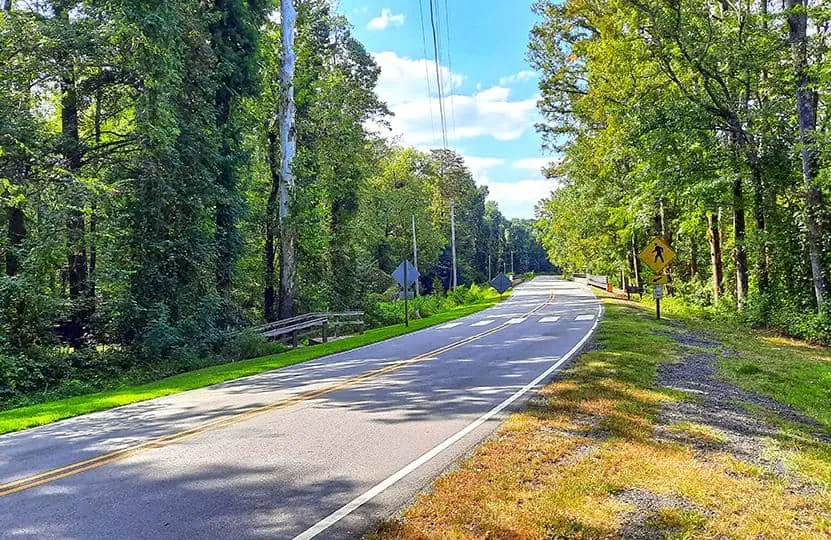
photography by: Omri Westmark
After crossing the regional Mill Pond Road, you’ll come across a wooden staircase that leads to a breathtaking balcony overlooking a dark swamp that in first glance might seem like a puddle of oil.
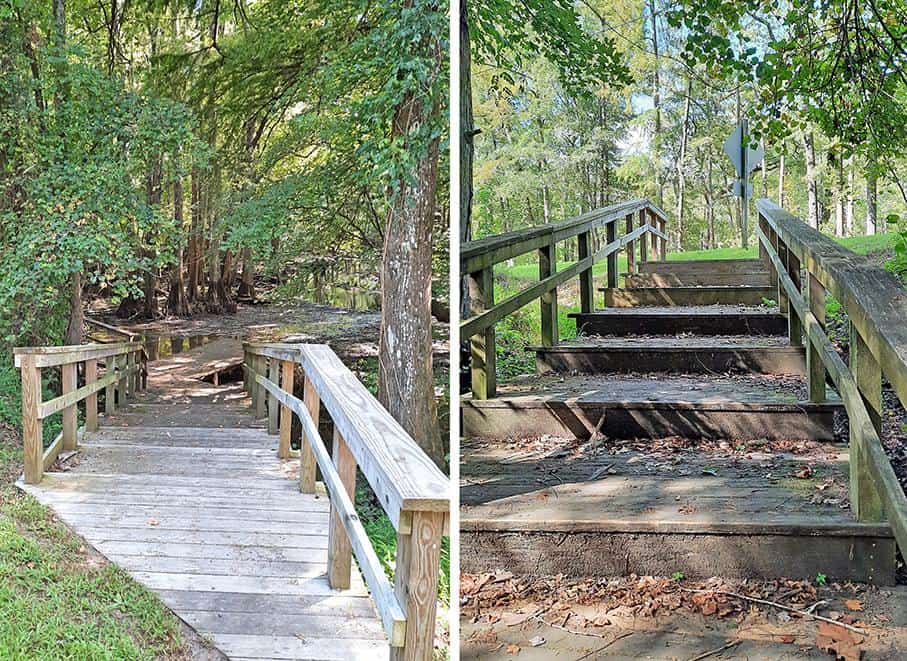
photography by: Omri Westmark
Whilst not being officially part of the Bennetts Creek Trail, the blackish wetland is a worthy off-road attraction to visit along the way. You might even be fortunate to witness snowy ergets or cooter turtles wading through the murky waters, which are strikingly dark, partly due to the absence of aquatic plants.
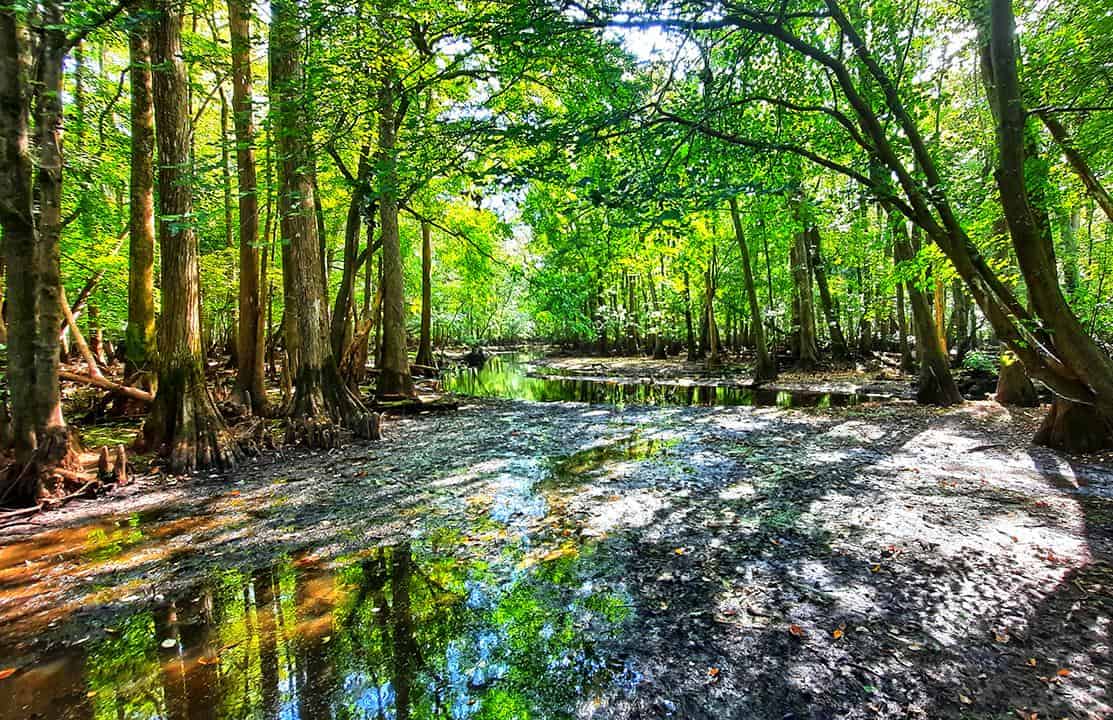
photography by: Omri Westmark
As you proceed, you’ll arrive at the bridge over the meeting point of Bennets Creek and the mill pond, from where you’ll have a chance to gaze at the creek’s dark waters or alternatively, at the greenish surface of the mill pond, depending on which side of the bridge you stand.
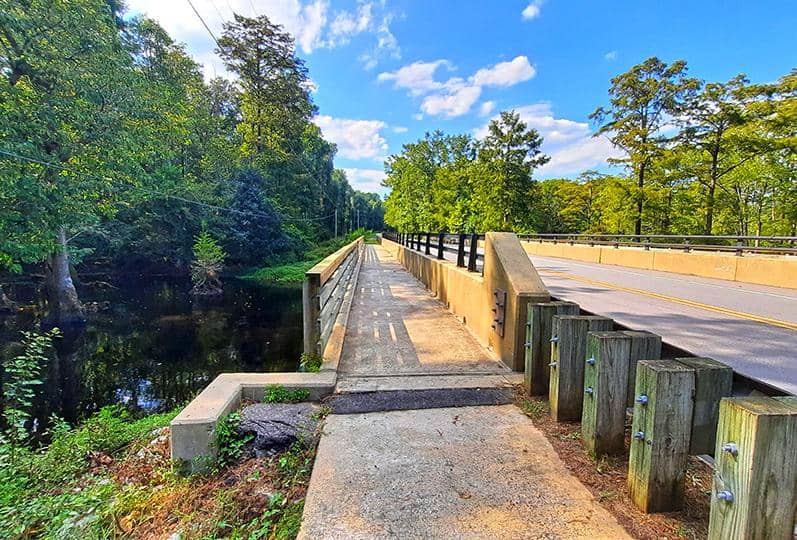
photography by: Omri Westmark
Located roughly 300 meters away from the parking area, the Bennetts Creek’s trailhead is marked by a modest wooden sign.
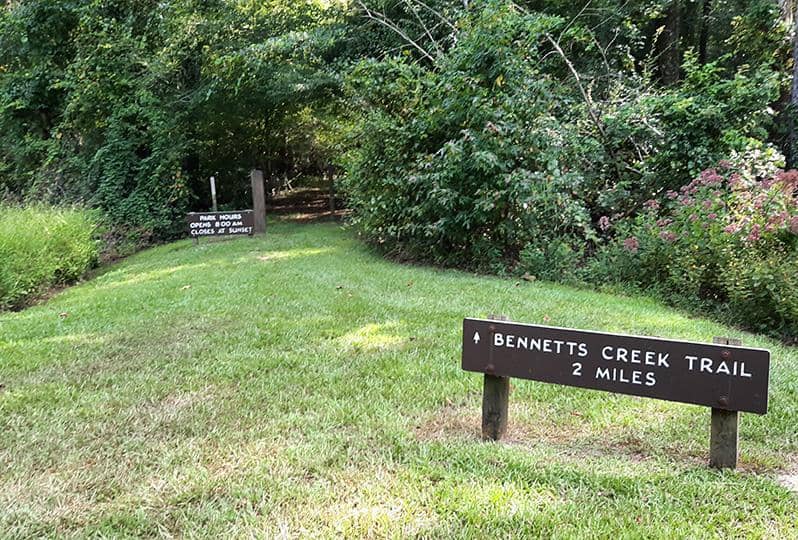
photography by: Omri Westmark
An unsuspecting hiker would most probably assume that this 2-mile trail is effortless, after all, its pathway is entirely flat. Nevertheless, it only takes few seconds from the moment you start walking along the trail, to understand how any preconception you previously had is utterly wrong, as literally clouds of mosquitos follow you wherever you go. As the nuisance is far worse than anywhere else in the park, you are practically faced with three options, either bring your own insect repellent, always be in a constant move or make a quick U-turn.

photography by: Omri Westmark
If you choose to stay in the trail, expect a spectacular vista of swampy terrain, dotted with decapitated dead cypress trees, surrounded by a dense beech forest.
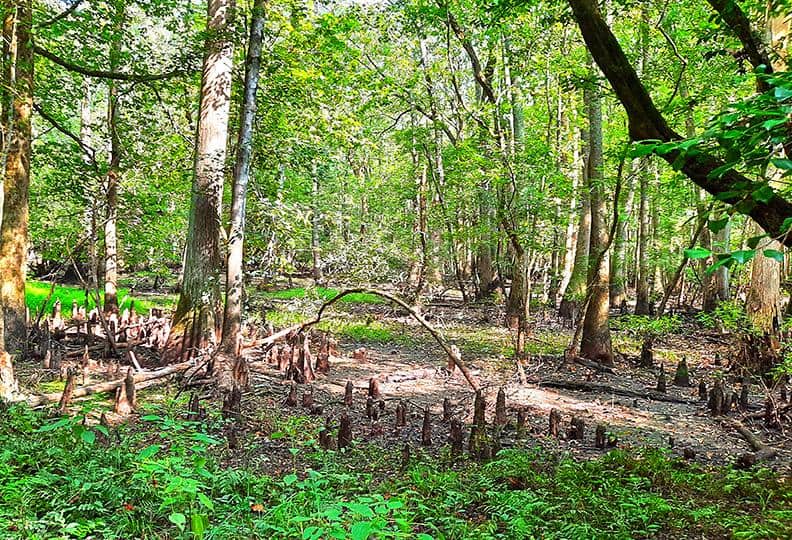
photography by: Omri Westmark
Getting the least sunlight out of the park’s trails, the Bennetts Creek Trail is named after the creek that runs along the pathway, that also happens to be the main source of water that feeds the Merchants Millpond. If you manage to ignore the mosquitos’ buzz in the background, you’ll be rewarded with a stunning sight of the creek’s vivid and colorful landscape.

photography by: Omri Westmark